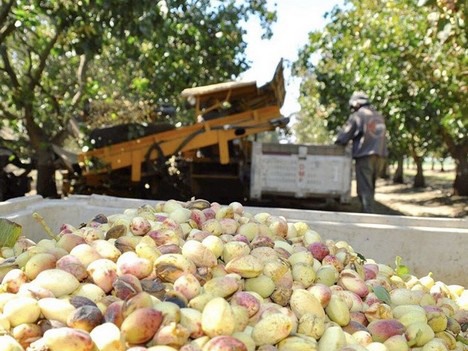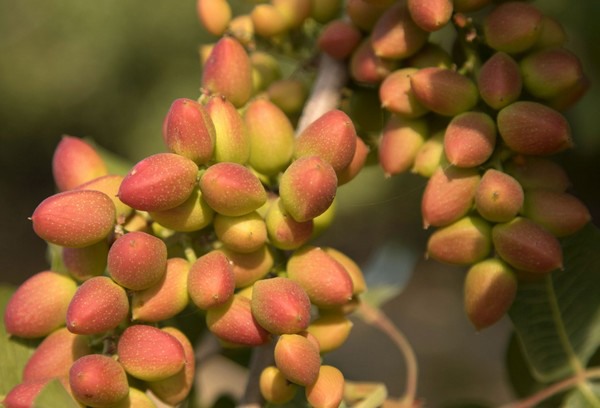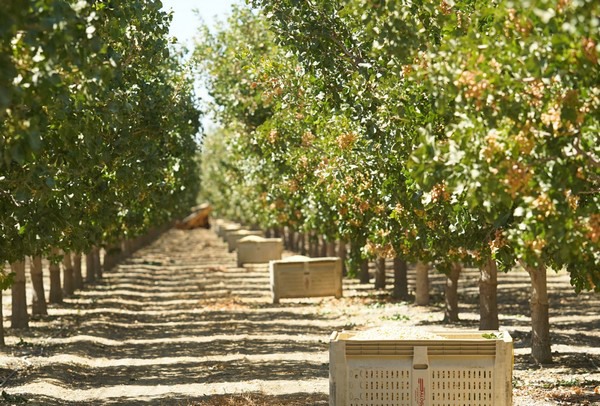The next six weeks, California pistachios will be on close watch around how much--if any, the current drought in the state is affecting its growth or “nut fill.”
Right now and through July is the nut fill period in which pistachios, which form their shells first, fill up inside with a viable nut. “This is a very critical time period for irrigation,” says Richard Matoian, president of the American Pistachio Growers in Fresno, California. “If you don’t have enough irrigation water available during the nut fill period, the tree will not fully form the nut inside that shell.”

This comes at a time when California’s drought situation continues to make headlines and affects some pistachio nut growers. “The situation overall is not good. But it can vary slightly depending upon what area of the state you grow in and what water district you might be a part of,” Matoian says.
Who is being affected?
So while some growers are located in areas with good groundwater and/or are receiving some supply of surface water, others have zero surface water and also limited sources of groundwater. “It runs the gamut of somewhat impacted to severely impacted,” says Matoian. “It’s parts of the entire San Joaquin Valley that are affected. But it varies within that region. It’s a hodge podge depending on the water district that’s been established decades ago.”
At the same time, the Sustainable Groundwater Management Act (SGMA) is starting to be implemented. This legislation, which passed in 2014, requires that all groundwater basins in California be sustainable and agencies were formed to ensure compliance with the act. “So for the first time, we’re being told by many growers that their groundwater agency is restricting their pumping of groundwater. And the way they’re restricting it is they’re saying you can only pump out X amount,” he says, noting rather than metering the wells, satellite imagery is being used to determine how much water a grower may have applied to that ground. “And if growers exceed the amount that’s allowed, they are then going to be charged a penalty or a fee,” says Matoian.

What does that mean for California pistachio growers? For many growers, it could cost anywhere from $500-$1,500 more/acre to pump the groundwater. “They still have to pay for the electrical cost to pump it out but this is also paying for the water itself,” he says. “So growers will be saving the water for the nut fill period. Whatever water you might have available, making sure you water during the nut fill period and using deficit irrigation during the other times of the year.”
The bigger picture means growers are having to farm with less water and be more strategic about when they apply water. “It’s just going to mean for some producing potentially less crop or the size of the nuts is going to be smaller,” Matoian says. “I do know growers who have both pistachios and row crops and they’re fallowing the row crops and transferring what water would have been used on those crops to their permanent crops. You have to keep your permanent crop alive and irrigate.”
Even more costs
All of this means more financial strain on growers, whether it’s absorbing the cost of purchasing water on the open market, which is scarcely available and then also needs to be transported, or paying to pump more for water out of the ground than what the grower’s groundwater basin allows to pump.

Following the nut fill period, Matoian says that while this 2022 pistachio season was expected to be an “on” year for the alternate-bearing crop, growers are reporting that it doesn’t appear that way. “We’ll probably be somewhere around 1 billion lbs. which will be a little bit less than last year,” he says.
That’s meeting a market where demand is good. The association’s most recent report was that shipments are up in every market compared to last year with the exception of Europe. “We hope that rebounds and comes back,” he says. “The belief was that Europe had enough product there and they were waiting to see what the size of the crop was here before they made commitments to purchase.”
 For more information:
For more information:
Richard Matoian
American Pistachio Growers
Tel: +1 (559) 475-0435 x 111
RMatoian@AmericanPistachios.org
https://americanpistachios.org/
